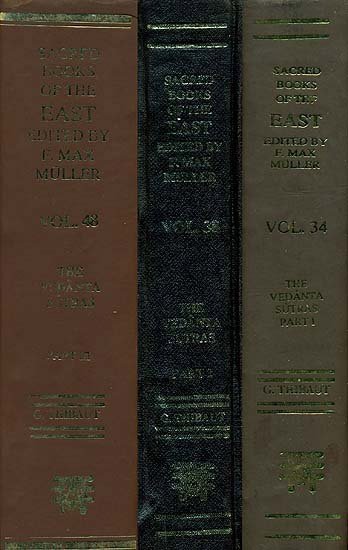Brahma Sutras (Ramanuja)
by George Thibaut | 1904 | 275,953 words | ISBN-10: 8120801350 | ISBN-13: 9788120801356
The English translation of the Brahma Sutras (also, Vedanta Sutras) with commentary by Ramanuja (known as the Sri Bhasya). The Brahmasutra expounds the essential philosophy of the Upanishads which, primarily revolving around the knowledge of Brahman and Atman, represents the foundation of Vedanta. Ramanjua’s interpretation of these sutras from a V...
Sutra 3.3.23
23. And for the same reason the holding together and the pervading the sky.
In the Taittiriyaka and in the khilas of the Rāṇāyanīyas we have the following passage: 'Gathered together are the powers among which Brahman is the oldest; Brahman as the oldest in the beginning stretched out the sky. Brahman was born as the first of all beings; who may rival that Brahman?' which declares that Brahman gathered together all the most ancient powers, that it pervades the sky, and so on. And as these attributes are not stated in connexion with any special meditation, we must infer that they are to be included in all meditations whatever on Brahman.—This primā facie view is controverted by the Sūtra. The holding together of all powers, etc., although not mentioned in connexion with any special meditation, is not to be included in all meditations whatever, but to be connected with particular meditations 'on the same ground,' i.e. according to difference of place. Where those qualities have to be included must be decided on the ground of feasibility. The attribute of pervading the whole heaven cannot be included in a meditation on Brahman as abiding within a small place such as the heart, and hence the other attributes also which are stated together with the attribute mentioned cannot be included in those meditations. And when we find that in meditations on Brahman as abiding within a small place it is said that Brahman is greater than the earth, or that the ether within the heart is as great as the universal ether, these attributes cannot be taken in their literal sense and hence included in those meditations, but must be viewed as merely meant to glorify the object proposed for meditation.—Herewith terminates the adhikaraṇa of 'holding together.'
